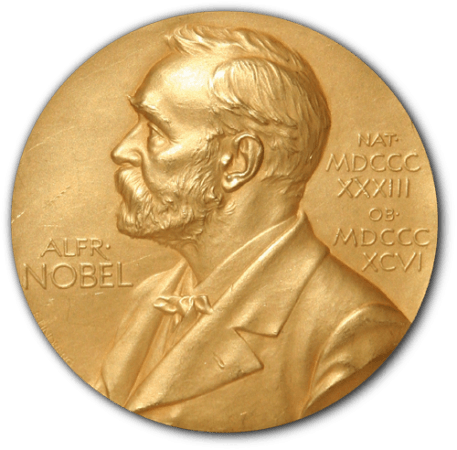
Scientists Eric Betzig, William E. Moerner of America and Stefan W. Hell of Germany received the Nobel Prize in Chemistry for their work on Microscopes on Wednesday.
The scientists have been awarded for their development of "super-resolved fluorescence microscopy", that enables a better resolution of the molecular study. The new development has now made it possible for the scientists to "visualise the pathways of individual molecules inside living cells," and study "in the tiniest molecular detail."
"They can see how molecules create synapses between nerve cells in the brain; they can track proteins involved in Parkinson's, Alzheimer's and Huntington's diseases as they aggregate; they follow individual proteins in fertilised eggs as these divide into embryos," The Guardian quoted the Nobel Assembly as saying.
"For a long time optical microscopy was held back by a presumed limitation: that it would never obtain a better resolution than half the wavelength of light. Helped by fluorescent molecules the Nobel Laureates in Chemistry 2014 ingeniously circumvented this limitation. Their ground-breaking work has brought optical microscopy into the nanodimension," the Nobel Assembly said about their work.
BREAKING NEWS: #nobelprize2014 in Chemistry to Eric Betzig @HHMINEWS, Stefan W. Hell, William E. Moerner @Stanford pic.twitter.com/eVxpDZfXeE
— The Nobel Prize (@NobelPrize) October 8, 2014About the Prize Winners
Hell is the director at Max Planck Institute in Goettingen, Division head at the German Cancer Research Center, Heidelberg. He had faith in science, which he thought would definitely lead him to where he stands now, an award in hand for his development.
"I had an intuitive feeling that the resolution of light microscopes had not come to an end," Hell said on receiving the Nobel Prize.
He developed one of the two principles that "enable the method stimulated emission depletion (STED) microscopy." This uses two laser beams to scan the "sample, nanometre for nanometre, and yields an image with a resolution better than Abbe's stipulated limit."
While Betzig, who is group leader at Janelia Farm Research Campus, Howard Hughes Medical Institute, Ashburn, USA and Moerner, who is a Professor of Chemistry and Applied Physics at Stanford University, USA, have been awarded for the other principle.
Though separately, they worked on the same method— single-molecule microscopy, which he himself utilised for the first time in 2006.
"The method relies upon the possibility to turn the fluorescence of individual molecules on and off. Scientists image the same area multiple times, letting just a few interspersed molecules glow each time. Superimposing these images yields a dense super-image resolved at the nanolevel," the assembly noted.

















